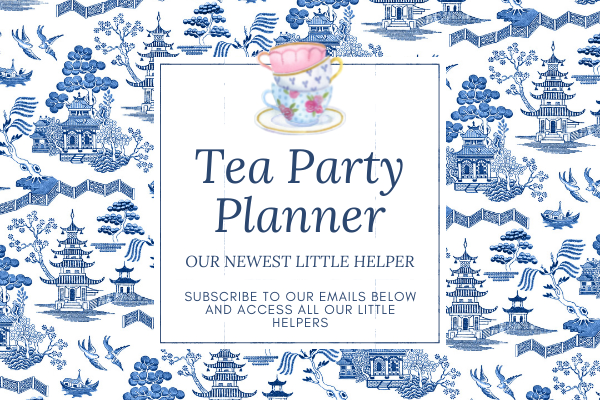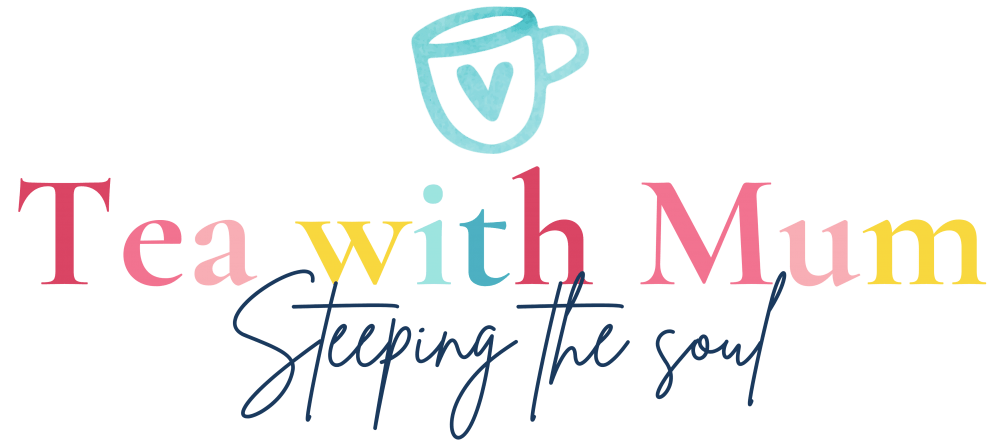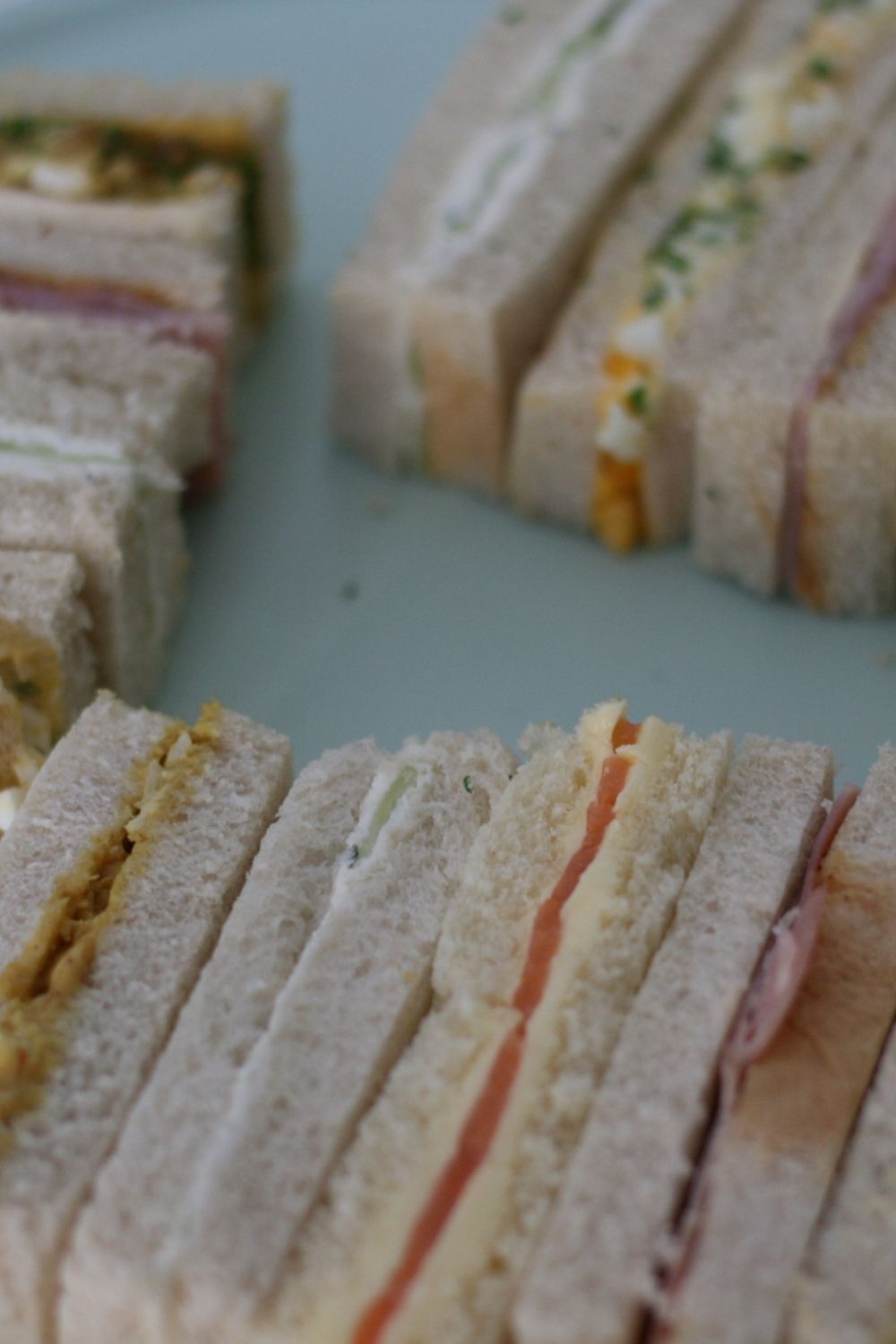How to plan your own quintessential English afternoon tea party
Introducing our new Afternoon Tea series!
To kick off, we’re looking at some of the basics about traditional afternoon tea, the afternoon tea menu and how to plan your own English afternoon tea.
Smartly dressed ladies in elaborate millinery constructions and cheeky fascinators air-kiss their friends and seek out their handwritten name cards and seats.
Before them, dainty teacups perch jauntily on mismatched saucers like the hats on their heads, teaspoons polished to a high shine snuggling on the side. Teapots steaming with heady perfumes, both foreign and comforting await their duty.
Chrystal champagne flutes refract the sunlight into rainbows that dance among bountiful posies of fresh blooms on tables covered with thick, starched linens.
The ladies lean in to admire the cake stands overflowing with elegant delicacies.
Layers of sweet, buttery pastry encase fragrant vanilla, rich chocolate while ripe, juicy fruit adorn moist creations of cake and cream. Pots of sweet jam overflowing with plump juicy berries and clotted cream almost as thick as butter flank fresh fluffy scones, still warm from the oven. Parcels of warm flaky pastry enveloping spicy, fragrant morsels are nestled between crustless sandwich soldiers displaying their regiments.
Now, where to start?
From the bottom, up, of course.
Our new series is all about the quintessential English afternoon tea!
We’ll be sharing ideal recipes for your afternoon tea menu. Traditional English afternoon tea elements will yield to modern recipes and dishes to suit fun afternoon tea party themes. All to help you plan your own fabulous afternoon tea party!
But first, let’s look at some of the fundamental elements of traditional afternoon tea, the afternoon tea menu and how to plan your own afternoon tea party.
Disclosure:
Some of the links below are affiliate links. As an Amazon Associate, I earn from qualifying purchases. Please read our full disclosure for more information.


The history of English afternoon tea
Perhaps surprisingly, afternoon tea is a relatively new tradition.
In 1840, the evening meal was customarily served at around 8 pm. Feeling peckish around 4 pm in the afternoon, Anna, the seventh Duchess of Bedford, ordered that a cup of tea, some buttered bread and a small cake be brought up to her room.
This tea in the afternoon became a habit and the Duchess soon started inviting friends to join her.
Tea became a social event. In the 1880s, ladies of society would change into gowns, gloves and hats to meet for a cup of tea, a small cake and a good dose of gossip.
When is afternoon tea traditionally served?
Afternoon tea is traditionally served in the drawing room between four and five o’clock. English afternoon tea was an event for the Ton and ladies would dress appropriately.
Now, afternoon tea is now served in the restaurant, lobby or tea rooms of the more noble hotels in England and throughout the globe, starting from 3 p.m.
Afternoon tea is not a biscuit or small cake scoffed with a cup of tea brewed with a teabag. That would be considered sacrilegious!
There are few hours in life more agreeable than the hour dedicated to the ceremony known as afternoon tea.
Henry James

Is high tea for higher society?
Quite the opposite, though I thought it was for many years.
High tea was eaten by the lower classes between five and seven o’clock in the evening. The high referred to the higher-backed chairs participants sat on to consume a much more hearty meal.
The daintier, more elegant traditional English afternoon tea was served at much lower tables earlier in the afternoon.
This post unravels the teatime differences in more detail.
What’s part of the traditional afternoon tea menu?
Traditional English afternoon tea consists of:
- a selection of dainty sandwiches cut into fingers. Traditional English afternoon tea finger sandwiches include (1) ham and mustard, (2) egg salad and cress, (3) cucumber and cream cheese, (4) smoked salmon and lemon butter and (5) coronation chicken
- scones served with clotted cream and preserves: our almost-foolproof featherlight scones are perfect!
- small cakes and pastries, such as our mini orange Gugelhüpfe
- tea – grown in India or Ceylon (now Sri Lanka) – poured from silver teapots into delicate bone china cups.
Optional dishes include:
- a small selection of warm, bite-sized savories
- a large cake to be shared, especially a victoria sponge cake
- small biscuits (cookies) or macarons, including as decorations or gifts for guests to take with them
- champagne or cocktails.

What makes a good afternoon tea party and afternoon tea menu?
The best afternoon tea party will serve fresh posts of tea of your choice in dainty teacups and saucers. The food should be served on a three-tiered stand, or perhaps one plate for the savouries and finger sandwiches and a two-tiered stand for the scones and then the small cakes.
The best English afternoon tea will serve the scones fresh and still warm, but NOT warmed in the microwave. They should be served with two types of preserves, normally raspberry preserves and lemon curd, together with lashings of clotted cream.
The finger sandwiches will be crustless – always, according to the Duchess of Bedford – and will not be overfilled to prevent filling oozing everywhere when you bite into the sandwich. They also will not have come straight out of the fridge, as cold bread is unpleasant.
Warm, bite-sized savouries are optional. They will have the perfect temperature and not have an overpowering flavour. They will also not be too heavy on cheese and cream, especially for those of us who are lactose intolerant.
There will be a selection of small cakes, which will be pretty and dainty to look at and taste delicious, served on a tiered stand.
There will be an unending pot of hot tea in your favourite flavour -perhaps afternoon tea or royal tea – made with loose tea, not bags. Perhaps it will even be kept warm with a tea warmer.
The bigger question is how can you recreate the perfect English afternoon tea at home?
Where’s the best place to have afternoon tea?
While things are in lockdown, the best place to have afternoon tea party is at home. We’ll be showing you how to plan an English afternoon tea party and afternoon tea menu for you and some friends (when friends are able to visit again. We may also look at how to have afternoon tea with your friend remotely if the lockdown continues much longer).
To experience the best of the afternoon tea tradition when in London, indulge yourself with a trip to one of the finest hotels. Try the Palm Court at the Langham, reportedly the first-ever London hotel to serve afternoon tea when it opened in 1865. The Dorchester, the Ritz and the Savoy are known for their afternoon tea, as are Harrods and Fortnum and Mason (where you can also buy some of your favourite tea to take home with you (Pssst! You can now buy them online too!)). Some of the more unusual (and fairly-priced) afternoon teas can be found at lesser-known hotels.
The west country – Dorset, Cornwall and Somerset – are known for their afternoon tea too. Be sure to visit a quaint tearoom if you are in the area.
Nowadays, fine hotels the world over will often serve an afternoon tea menu in their lobby. Check your local hotels to see what they have on offer.

Why should you host afternoon tea?
Afternoon tea is so versatile! Imagine:
- An afternoon tea with bib and bear shaped cookies and a gender reveal cake for a baby shower
- A gin and champagne afternoon tea for a hen’s do
- Petit fours decorated with flowers for a Mothers’ Day afternoon tea
- A Mad Hatter’s tea party for a child’s birthday
- Pink cakes and cocktails for a pink afternoon tea to raise money for breast cancer
- A French-themed afternoon tea with macarons and eclairs for Bastille Day
- Lemon cakes and daffodils to for an afternoon tea to raise money for cancer
- A traditional English afternoon tea for a special (or not so special) birthday.
I could go on.
The best part about hosting an afternoon tea party is that it is a much cheaper alternative and it is (relatively) easy to tailor to fit dietary requirements. Scones cost almost nothing to make and finger sandwiches are also cheap. You can adjust your afternoon tea menu to suit your budget.
Compared to a formal lunch or a dinner party, afternoon tea is also more relaxed. That is not to say it cannot be formal – you can easily specify a formal dress code including elaborate millinery constructions and cheeky fascinators.
How to plan an English afternoon tea
1. Work out the basic details and send out invitations
Start is with the basics. When and where will it be held? What time? Who is invited? You might also want to take a leaf out of the Ritz playbook and specify a dress code.
Will there be a theme? Is it an Easter afternoon tea? Will it be a pink afternoon tea to raise money for breast cancer? Is it a birthday, hen’s party or baby shower? This might dictate your menu, decorations and whether there is any additional information your guests should know.
Send out your invitations. Depending on the reason for the afternoon tea party, this could be a casual invite or a formal hand-written invitation sent in the post. Your invitation will set the tone for your afternoon tea.
2. Decide on your afternoon tea menu
Next, decide what you will be serving and find your recipes. Consider:
- How will the dishes fit with your theme or occasion. Does there need to be a birthday cake?
- Are there any dietary needs you need to consider?
- How much will you need to serve? Is the afternoon tea replacing another meal? Does it then need to be more substantial?
- Are you planning to make or buy your food?
- Is there anything you can make in advance?
Unless you are certain all of your guests drink the same type of tea, try and have a few different types of tea available. Be sure to have cream, sugar and lemon available. It is also polite to have coffee available for those who prefer it over tea.

3. Organise your table settings for afternoon tea
Each person will need at least a small plate, a teacup and a fork and spoon. Saucers are lovely, but you may not have any. If you are servings savouries, you might want a second plate for each person. Also, consider the drinks you are serving: you might need champagne flutes, cocktail glasses and/or water glasses in addition to the teacups.
You will also need serving plates or a cake stand or stands for your scones, sandwiches and delicacies, as well as bowls for your preserves and clotted cream. It does not need to be a three-tiered stand: I don’t have one and don’t intend to get one unless I decide to make one (perhaps I’ll do a post on how to make one using one of these sets).
If you don’t have one, there are a number of three, two-tiered and single-tiered cake stands available online or at stores like IKEA. You can also just place a plate on an upside-down glass or bowl to get the same effect.
You will need a teapot. Most likely, you will need a tea strainer, a rest for the tea strainer and a sugar bowl and milk jug to serve the tea as well.
Perhaps the best place to find suitable plates and cups and decorative bowls, etc. for your English afternoon tea party is your grandmother’s or great aunt’s cupboards. If your elderly relatives are anything like mine, they will have an interesting collection of floral cups and saucers and plates and interesting bowls. They may not all match, but they could make a nice mixture or you could supplement them with some more modern everyday pieces.
If you are looking to buy something to hold a number of afternoon tea parties, try thrift and charity shops, or online market places like etsy. Look for pieces that will coordinate with your existing dinner set.
If you are like me, you have a small collection of antique tea paraphernalia, interesting spoons or cake servers. This is the opportunity to use them. Collections shine at an afternoon tea party.

4. What decorations do you need?
Unless you are planning a themed afternoon tea party, there is very little else you will need in the way of decorations and much will depend on the size of your table. You want to ensure you have enough space for your food and teapot!
- Some pretty serviettes or napkins (that will help tie together a mismatched tea service)
- A bunch or two of flowers or a small pot of lilacs or daffodils or similar. Think fragrant posies rather than large bunches that are gorgeous but prevent relaxed conversation.
- Perhaps a small card with the menu written on it (helps for any food allergies) and some place cards if you are being ore formal.
If you are planning a themed afternoon tea party, add some themed decorations (to go with your themed food). Try and keep the decorations to a minimum though, so your table is not too cluttered.
- Use the type or colour of flowers to fit with your theme, like pink flowers for a pink tea party.
- Stacking flowers or serving plates on books can add interest and work well with a book-related theme. Add some playing cards to your table for a Mad Hatter’s tea party, for example.
- Use your menu and place cards to carry your theme and design them accordingly.
Favours can also support a theme.
Edible favours are popular and guests can take them home or consume them during the tea party. Individually wrapped biscuits or chocolates or small servings of the tea you are serving work well.
Cookies and chocolate can also easily be decorated to fit the theme: diamond rings, teddy bears, numbers, champagne bottles and flowers fit numerous occasions.
5. Is there anything else you should plan in advance?
On the day, you will want to relax and enjoy your guests while musing on the merits of the tea and sharing a good slice of gossip. If you are worried about discussions getting a little thin, find out more about reading tea leaves as a fun game to play with your guests.

Our plans for the next few months: Our afternoon tea series
Now that you know the history behind the afternoon tea and know how to plan an English afternoon tea party, we’ll look closer at the afternoon tea menu. For the next months, we’ll be sharing a variety of recipes for afternoon tea, from traditional to modern with a few twists thrown in for good measure to have your cake stands overflowing with simple delicacies. And we’ll start with recipes for traditional English afternoon tea finger sandwiches – crustless of course!
We hope you will enjoy the series!
Have you ever hosted an afternoon tea party? What’s your favourite afternoon tea recipe?


You’ll love these posts too!
How to make tea-infused shortbread
Easy featherlight scones: the ultimate London afternoon tea recipe
Mini Orange Gugelhüpfe: simple, light and perfect for Mothers’ Day
A foolproof lemon curd recipe (+ 3 other delicious fruit curd recipes)
How to make traditional English afternoon tea finger sandwiches
How to make Royal fruit scones truly fit for a queen
How to make mille-feuille: 3 time-saving tricks for a stunning French pastry
Save for later:








This is a lovely post, and an altogether darling site! I’m hosting an afternoon Mad Tea Party this weekend for my daughter’s “Onederland” themed birthday. Everything from the photos (gorgeous, by the way!), to the tips, to the suggestions has been immensely helpful. Thank you so much!
A Onderland Mad Tea Party is a fantastic idea! So cute! I hope Miss One had a onederful day!
Thank you so much for the compliments. I am so glad we could help.